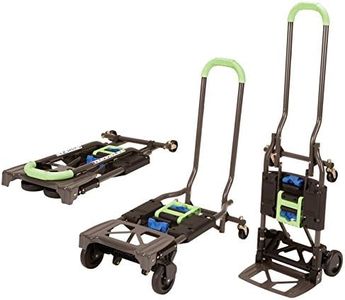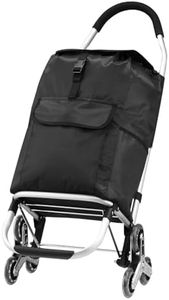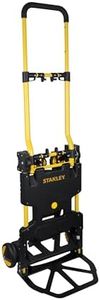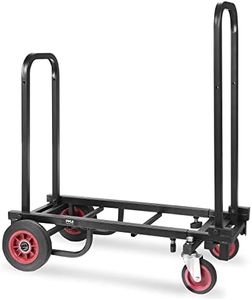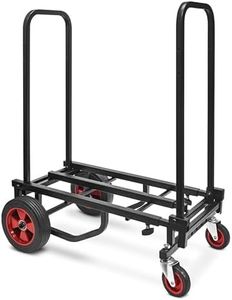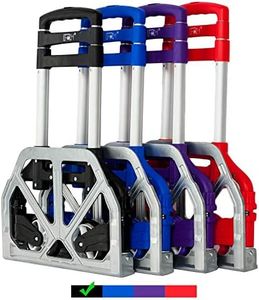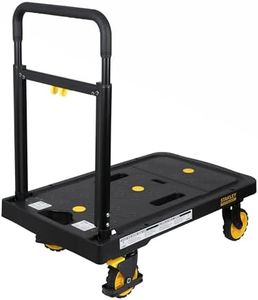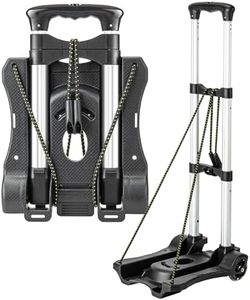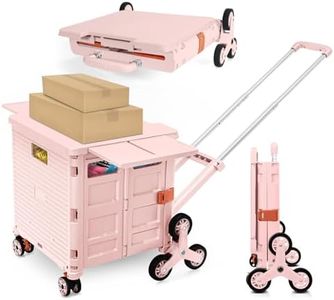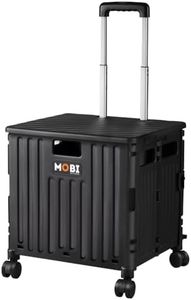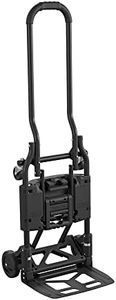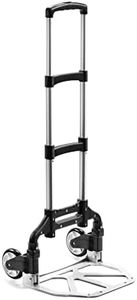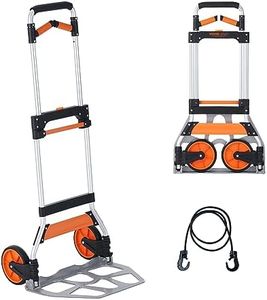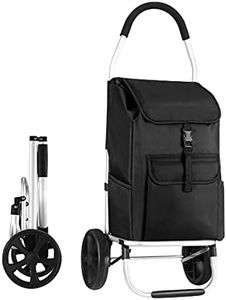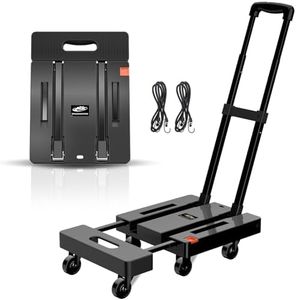We Use CookiesWe use cookies to enhance the security, performance,
functionality and for analytical and promotional activities. By continuing to browse this site you
are agreeing to our privacy policy
10 Best Hand Trolley
From leading brands and best sellers available on the web.Buying Guide for the Best Hand Trolley
Selecting the right hand-trolley is all about understanding your typical load size, where and how you'll use it, and the features that make moving things easier for you. Think about what you'll most often be hauling, how heavy those items are, the kind of terrain or flooring you'll be moving over, and how much space you have for storage. A hand-trolley can be a huge help for transporting heavy or bulky items, but picking the wrong one can make your job harder, not easier. By paying attention to certain key specifications, you'll be able to find a hand-trolley that fits both your workload and your space.Load CapacityLoad capacity tells you the maximum weight the hand-trolley can safely carry. This is important because overloading can damage the trolley or injure the user. Load capacities are often listed in kilograms or pounds. For lighter, occasional uses like moving small boxes, a lower capacity (around 100-150 kg or 220-330 lbs) might be fine; for warehouses or heavier items, look for higher capacities (200 kg/440 lbs or more). To pick the right one, consider the heaviest item you plan to move and choose a trolley with a capacity that comfortably covers your needs, adding a safety margin.
Frame MaterialThe frame material impacts how sturdy and heavy the hand-trolley is, as well as how well it stands up to daily use. Common materials include steel, aluminum, and sometimes plastic. Steel is very strong and suitable for heavy-duty applications, but it makes the trolley heavier to handle. Aluminum is lighter, making it easier to maneuver, but it may not handle as much weight. Plastic frames are only suitable for very light loads. Your choice here should be guided by how much weight you need to move and whether ease of handling or maximum strength is your top priority.
Wheel Type and SizeWheels are critical for smooth movement and stability. Wheel type (solid rubber, pneumatic/air-filled, or hard plastic) and size affect how well the trolley rolls over different surfaces. Pneumatic wheels cushion bumps and work well on rough ground, while solid rubber wheels are fine for flat indoor surfaces. Larger wheels handle uneven surfaces better and make stairs easier to manage. Think about your main use: for inside on smooth floors, smaller, solid wheels work well, but for outdoor or mixed surfaces, look for larger, air-filled wheels.
Handle DesignThe handle design affects comfort and control. Handles can be straight, looped, or have ergonomic grips; some are foldable for storage. A comfortable handle reduces hand strain, especially on long jobs. If you expect to maneuver in tight spaces or need to store your trolley compactly, a folding or telescoping handle might be ideal. Test how the handle feels in your grip and imagine moving your typical loads to decide what’s best for you.
Platform or Toe Plate SizeThe platform, or toe plate, is the flat surface where items rest. Its size determines how much or what kind of items you can carry. A wider or deeper plate supports bulky loads, preventing them from tipping off. If you mostly move small boxes, a standard size works, but for wide or oversized items, look for a bigger plate. Choose based on the size and shape of the things you’ll move most often.
Foldability/Storage FeaturesSome trolleys are foldable or have collapsible features, making them easier to store when not in use. This is particularly important if you have limited storage space or need to transport the trolley in a car. If your trolley will live in a closet or trunk when not in use, a foldable one is worth considering. Think about where you'll keep it and how often you'll move it between locations.
